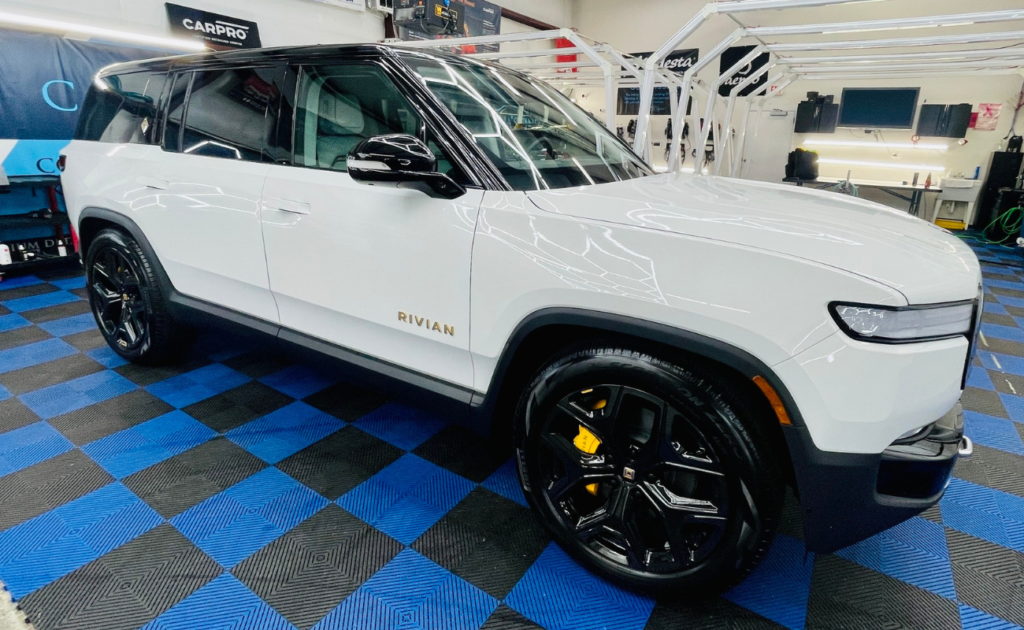When it comes to ensuring your car’s paint protection film (PPF) stays in top condition, there are key strategies you need to employ. From using gentle cleaning techniques to avoiding harsh chemicals, each step plays a crucial role in maintaining the integrity of the film. Regular inspections and proper drying methods are vital elements that should not be overlooked. However, there is one more aspect that is often underestimated but holds significant importance in extending the lifespan of your paint protection film. Stay tuned to discover this essential tip that could make a substantial difference in preserving your car’s appearance.
Cleaning Techniques
When it comes to maintaining your car’s paint protection film, proper cleaning techniques are essential for preserving its appearance and longevity. To start, use a gentle car wash soap and a soft microfiber cloth to clean the film. Avoid using harsh brushes or abrasive materials that could scratch the film.
Begin by rinsing your car with water to remove any loose dirt or debris. Then, apply the soap mixture to the cloth and gently wash the film in a back-and-forth motion. Be sure to rinse thoroughly to remove all soap residue.
Additionally, it’s important to dry the film properly after cleaning. Use a clean microfiber towel to gently dry the film, making sure to remove all water droplets to prevent water spots. Avoid using air drying methods as they can leave behind mineral deposits that could damage the film over time.
Avoiding Harsh Chemicals
To maintain the integrity of your car’s paint protection film, it’s crucial to steer clear of harsh chemicals that can compromise its quality and longevity.
Harsh chemicals such as bleach, ammonia, and abrasive cleaners can damage the protective film over time, leading to discoloration, peeling, or even complete failure. When cleaning your car, opt for mild, pH-neutral soaps or specifically formulated products that are safe for paint protection films. Avoid using products containing solvents, petroleum distillates, or high levels of alcohol, as these can break down the protective layers of the film.
Furthermore, when washing your car, make sure to use microfiber cloths or soft sponges to gently clean the surface without causing scratches or abrasions.
Always rinse the car thoroughly before washing to remove any debris that could potentially scratch the film during cleaning. By avoiding harsh chemicals and using gentle cleaning methods, you can help preserve the appearance and effectiveness of your car’s paint protection film for years.
Regular Inspections
Regular inspections play a vital role in ensuring the ongoing protection and performance of your car’s PPF. By regularly inspecting the film, you can detect any imperfections or damages early on, allowing you to address them promptly and prevent further issues.
Inspections should be done in a well-lit area, ideally outdoors, to spot any potential problems easily. Begin by visually examining the film for any signs of peeling, bubbling, discoloration, or scratches. Run your fingers gently over the film to feel for any irregularities that may not be immediately visible.
During your inspection, pay close attention to areas that are more prone to damage, such as the front bumper, hood, and side mirrors. Additionally, check the edges of the film to ensure they’re securely adhered to the car’s surface.
Regular inspections help maintain the integrity of the paint protection film, prolonging its lifespan and effectiveness in safeguarding your vehicle’s paint.
Proper Drying Methods
How can you ensure the longevity and effectiveness of your car’s premium paint protection film? Proper drying methods play a crucial role in maintaining the appearance and integrity of the film.
After washing your vehicle, be sure to dry it thoroughly to prevent water spots and potential damage to the film. Using a clean microfiber cloth or a soft squeegee, gently remove excess water from the surface. Avoid using rough materials that could scratch the film.
When drying the car, start from the top and work your way down to prevent water from running over already-dried areas. Pay special attention to the edges of the film where water can accumulate and cause peeling over time.
Additionally, consider using a detailing spray specifically designed for paint protection film to enhance the shine and provide an extra layer of protection.

Dealing With Contaminants
After ensuring your car’s paint protection film is thoroughly dried, the next step in maintaining its pristine condition is dealing with contaminants. Contaminants like bird droppings, bug splatter, tree sap, and road tar can degrade the film if left untreated. To tackle these issues, start by rinsing the affected area with water to loosen the contaminants.
Next, use a gentle car wash soap and a microfiber cloth to clean the surface. Avoid harsh chemicals or abrasive materials that could damage the film. For stubborn contaminants, consider using a specialized cleaner recommended by the film manufacturer. Remember to wash and dry the area thoroughly to prevent water spots.
Regularly inspect your paint protection film for any contaminants and address them promptly to preserve its appearance and effectiveness. By staying proactive in cleaning and maintaining your film, you can ensure long-lasting protection for your vehicle’s paint.
Professional Maintenance
Consider entrusting the care of your car’s paint protection film to professionals for specialized maintenance. Professional maintenance ensures that your paint protection film is properly cared for, extending its lifespan and effectiveness. Skilled PPF installer have the expertise and tools necessary to perform thorough inspections, identifying any issues with the film and addressing them promptly. By relying on professionals, you can rest assured that your paint protection film will receive high-quality care tailored to its specific needs.
Additionally, professional maintenance often includes services such as detailing and polishing, which can help keep your paint protection film looking its best. These services enhance the appearance of your vehicle and contribute to the overall protection of the film. Professionals use industry-approved products and techniques to ensure your paint protection film remains in top condition.
You can ensure longevity and effectiveness by following these essential tips for maintaining your car’s paint protection film. Remember to use gentle cleaning techniques, avoid harsh chemicals, regularly inspect for imperfections, dry properly to prevent water spots, and address contaminants promptly. With proper care, your paint protection film will continue to protect your car’s paint and keep it looking great for years.
